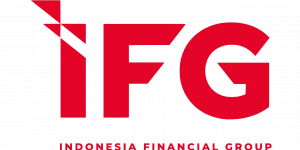Authors: Ibrahim Kholilul Rohman [1] , Rosi Melati [2]
The Financial System Stability Committee (KSSK) has recently released a report on the financial sector’s performance in the first half of 2023. While some areas experienced modest growth, the banking sector continues to exhibit promise. Bank credit saw a year-on-year increase of 7.76%, slightly lower than the 9.39% recorded in May 2023. Similarly, investment credit growth declined to 9.60% year on year, compared to 12.69% in the previous month. Third Party Funds (DPK) witnessed a 5.79% year-on-year growth, just slightly below the previous month’s 6.55%, largely driven by deposits.
While the banking industry shows relatively stable performance, the insurance sector is facing significant challenges in 2023. It stands as the only financial sector experiencing negative growth, with a decline of -0.7% year on year, despite the country’s overall GDP growth reaching 5.03% year on year.
From an industry perspective, notable disparities emerge between the life insurance and general insurance sectors. The life insurance industry experienced a negative growth in gross premiums and claims, both declining by -11% and -7% year on year, respectively. On the other hand, the general insurance sector demonstrated relatively positive growth in gross premiums at 7% year on year, but faced a larger increase in gross claims of 14% year on year.
We have identified two primary structural issues that are impeding the growth of Indonesia’s insurance industry and contributing to a penetration rate below 4% over the last five years. The first issue pertains to financial literacy. A survey conducted by the Financial Services Authority (OJK) in 2022 revealed a low level of financial literacy (31.7%) and inclusion (16.6%) within the industry.
A recent study conducted by IFG, which covered over 500 students, sheds light on the understanding and ownership of financial instruments among young individuals, revealing striking findings. The majority of respondents were familiar with conventional products such as savings (97%), gold (61%), and investment options like stocks (67%), bonds (41%), and mutual funds (47%). However, only 37% of those surveyed were familiar with insurance policies. Moreover, the ownership pattern remained consistent, with most respondents possessing conventional products like savings (97%) and gold (19%), while only a mere 9% had insurance policies.
Similar problems have occurred in other developed countries in the past. Europe, for instance, has witnessed 65 instances of insurance failure, largely due to underpricing, high operational costs, depreciation of investments, and other operational challenges. However, in the majority of these cases, policyholders’ rights were safeguarded through takeovers by other parties or assistance capital injection, as only 5% of companies managed to recover without external aid. Similarly, the United States also faced significant insurance failures in the life and health sectors until 2000, after which the numbers began to decrease.
Among the factors contributing to this significant improvement in the industry’s image, the establishment of the insurance guarantee scheme plays a key role. The insurance guarantee scheme (IGS) is designed to protect customers by providing compensation to policyholders or beneficiaries in the event of an insurance company’s bankruptcy. Implementing the IGS not only ensures the sustainability and security of the insurance business but also aims to restore public confidence in the industry.
Indonesia is poised to embrace the implementation of Law no 4 of the year 2023 (UUP2SK), which grants the Deposit Insurance Corporation (LPS) new mandates. LPS, currently an institution that guarantees deposits and policies, will now play an active role in maintaining financial system stability, executing bank resolutions, and overseeing the liquidation of insurance companies. This expanded mandate aims to address issues related to confidence and trust and mitigate potential systemic impacts in the insurance sector.
Notably, credit insurance stands out with the highest loss ratio among these three business lines reach 59% on Q1 2023. The loss ratio, which represents insurance claims paid plus adjustment costs divided by total premium earned, has consistently been high for credit insurance over the past five years, necessitating closer attention to its performance.
In an effort to understand the relationship between the insurance and banking sectors, IFG Progress conducted a study utilizing Input-Output (IO) table data from 2010 and 2016—the most recent available data—encompassing 185 industries. The research findings reveal a substantial level of interrelation and interdependence between both industries. During the period of 2010 to 2016, the insurance industry’s contribution to the banking sector increased by 4.2 times, while the banking industry’s contribution to the insurance sector rose by 2.7 times. This suggests a high degree of interconnectedness between the two industries, where the failure in the insurance sector could potentially lead to cascading impacts on the banking industry.
In conclusion, to foster further improvement in the insurance sector and ensure long-term financial stability, it is imperative to implement an insurance guarantee scheme and address the challenges posed by low financial literacy and inclusion rates. Additionally, addressing the potential cascading impact due to inter-relatedness between sectors is crucial. By adopting these measures, we can create a more robust and resilient insurance market, instilling greater confidence and trust among consumers.
This article was published in thejakartapost.com with the title “Can insurance guarantee schemes illuminate the industry’s future?”. Click to read: https://www.thejakartapost.com/opinion/2023/08/11/can-insurance-guarantee-schemes-illuminate-the-industrys-future.html.
[1] Senior Research Associate of IFG Progress
[2] Research Associate of IFG Progress


